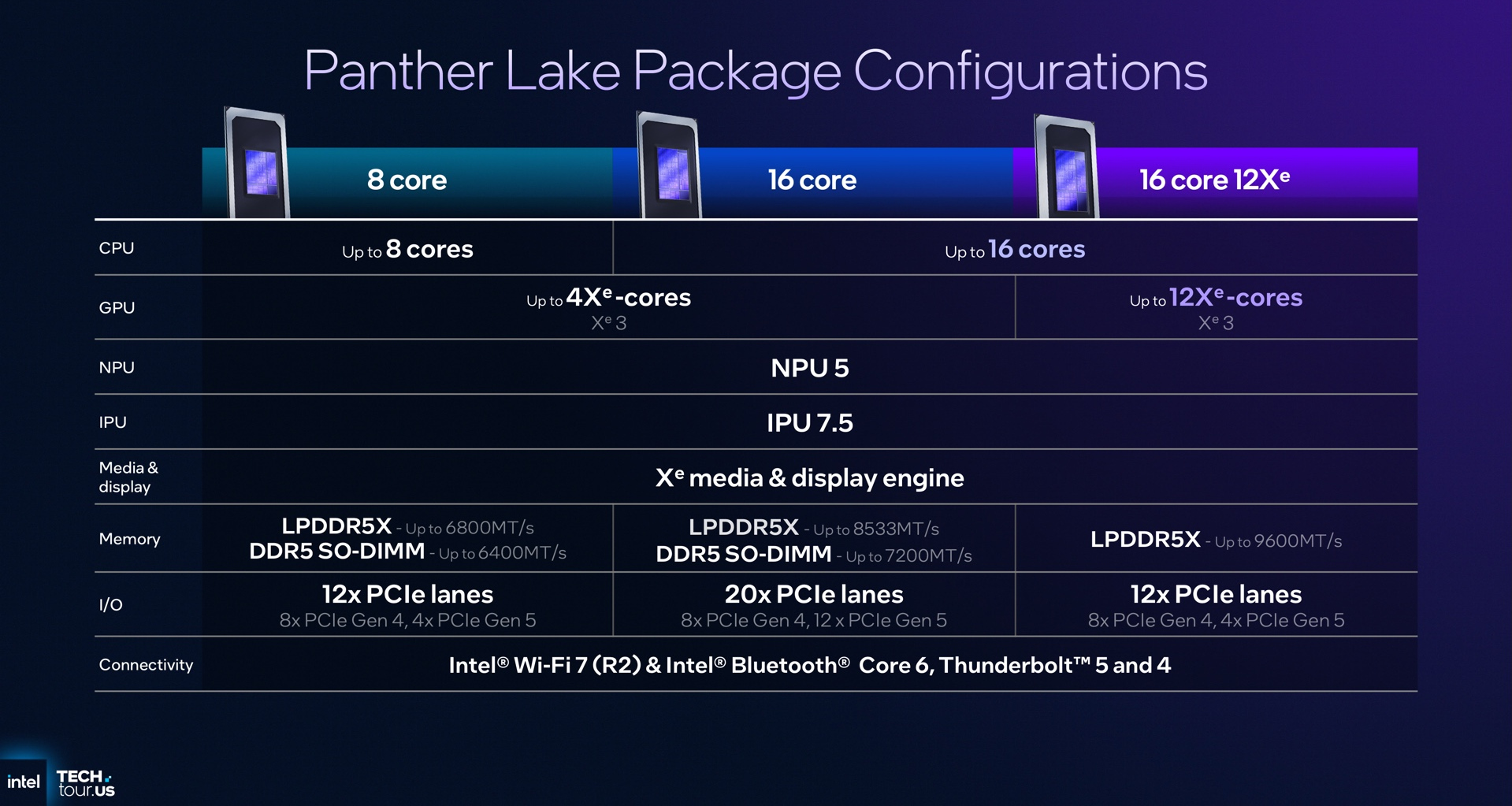Intel have now revealed a whole lot more on Panther Lake, their next-generation chip architecture with RibbonFET and PowerVia.
Using their new Intel 18A 2-nanometer class node they said it delivers "up to 15% better performance per watt and 30% improved chip density compared to Intel 3.5". The big new changes include:
- RibbonFET: Intel’s first new transistor architecture in over a decade, enabling greater scaling and more efficient switching for improved performance and energy efficiency.
- PowerVia: A groundbreaking backside power delivery system, enhancing power flow and signal delivery.
They also mentioned Foveros, their advanced packaging and 3D chip stacking technology that "enables the stacking and integration of multiple chiplets into advanced SoC designs, delivering flexibility, scalability and performance at the system level". Intel 18A will form the foundation for three upcoming generations of products both client (like gamers) and servers.
From the press release, Intel said the Intel Core Ultra series 3 processors will be the first client chips built on Intel 18A, which should see "broad market availability starting January 2026".
Some highlights they included:
- Lunar Lake-level power efficiency and Arrow Lake-class performance.
- Up to 16 new performance-cores (P-cores) and efficient-cores (E-cores) delivering more than 50% faster CPU performance vs. previous generation.
- New Intel Arc GPU with up to 12 Xe cores delivering more than 50% faster graphics performance vs. previous generation.
- Balanced XPU design for next-level AI acceleration with up to 180 Platform TOPS (trillions of operations per second).
It will be especially interesting with the new Xe3 GPU architecture, and with the overall efficiency perhaps we might see more Intel gaming handheld PCs as they look to take back the market from AMD.

Pictured - Intel Panther Lake
We'll have to wait until closer to January for when they actually reveal the list of processors coming, which as far as I can see they haven't done so yet, this announcement was much more about all the tech behind it and not specific models of anything. It's all about being more modular, allowing for them to scale it better across different industries.
XeSS 3 with multi-frame generation was also revealed, to compete with NVIDIA DLSS more. So future Intel GPUs will see a nice performance boost, and it should be supported on their older Intel Arc GPUs too. Games that support XeSS 2 will also support XeSS 3 when it launches.
You can read more in their public post.
And in case you missed the other big news recently: NVIDIA are investing $5 billion in Intel to develop new chips together.
https://www.phoronix.com/review/intel-open-source-2025
The Elbrus-8V7 is a Russian-developed processor for laptops, desktops, and embedded computers. It is based on the new, domestically developed 7th-generation Elbrus architecture (as reflected in its name).
The MCST presentation slide states that the new processor will feature "6 or more cores" with a performance of "2 or more than 2 GHz." The performance of the new Elbrus-8V7 will be approximately 0.5 TFLOPS. Support for 4th-generation PCIe will be implemented. The processor will feature integrated graphics with 3D support (a 3D GPU and codecs).
Although, what are we supposed to do with it?
Well, thanks for the info.
Although, what are we supposed to do with it?
Well... We all do need a CPU to run our Linux on?












 How to setup OpenMW for modern Morrowind on Linux / SteamOS and Steam Deck
How to setup OpenMW for modern Morrowind on Linux / SteamOS and Steam Deck How to install Hollow Knight: Silksong mods on Linux, SteamOS and Steam Deck
How to install Hollow Knight: Silksong mods on Linux, SteamOS and Steam Deck